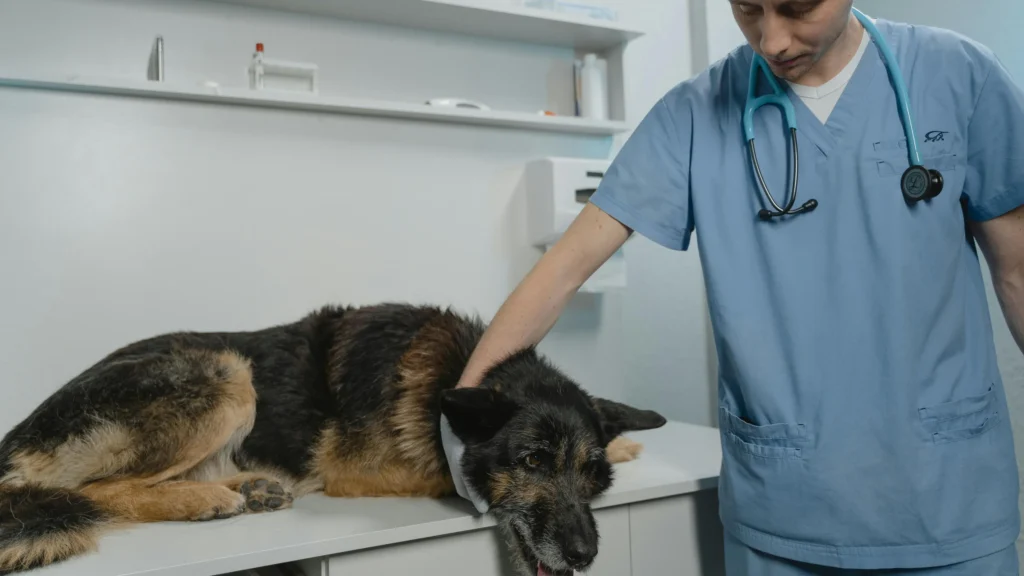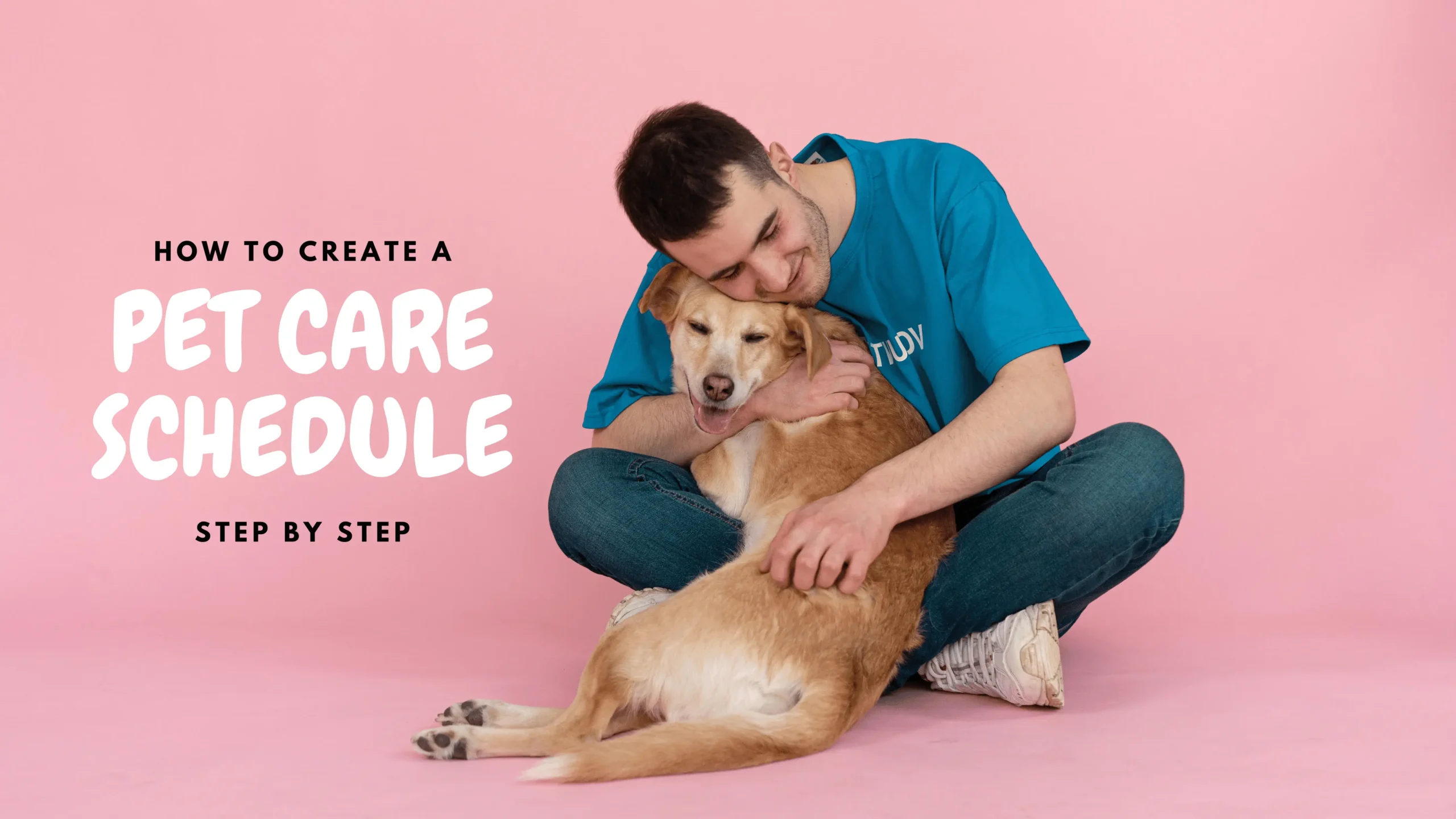Creating a reliable pet care schedule is essential for maintaining your pet’s health, happiness & behavior and a daily routine guarantees that pets’ physical and emotional needs that are satisfied with lowers anxiety and helps them feel secure also many pet owners battle time management and sometimes forget how vital regular feeding, exercise and grooming are.
This step-by-step manual shows how to create a pet care schedule customized to your pet’s particular requirements and you will discover how to create a plan that advances health and deepens your connection with your companion.
Why You Should Have a Pet Care Schedule
Both dogs and their owners benefit from an organized pet care schedule with regular behavior problems and stress reduction follow from routine and knowing what to anticipate lets pets flourish. Regular feeding, exercise, grooming and play help to maintain general health.
Pets could show signs of restlessness, overeating or bad cleanliness if there is no set schedule of pet care then setting up a pet care schedule also helps the owner to manage their time better.
First Know the Needs of Your Pet
Know your pet’s breed, age, level of activity and medical status before creating a daily plan and yes puppies and kittens need regular toilet stops and feeding with senior animals may require extra medical care and attention but dogs should take regular walks; cats might choose calm-enhanced surroundings.

Think about grooming frequency, feeding preferences and mental stimulation and these elements make the timetable efficient and unique.
Step-by-Step Guide to How to Create a Pet Care Schedule
Step 1: Set Regular Feeding Time
Give your pet at fixed intervals every day of two meals a day are usually sufficient for most adult cats and canines but younger pets might require three to four.
Plan meals in the morning and evening and maintain consistent times with daily water consumption should be observed and overfeeding prevented with measuring instruments.
Step 2: Include Walking and Exercise Time
Add physical activity into your regular schedule. Dogs need playtime and walks to keep their weight in check and their mental equilibrium depending on age and breed but some need more vigorous activity.
Short interactive sessions with toys or climbing structures benefit cats with schedule walks at consistent times for routine building.
Step 3: Organize Mental Stimulation and Playtime
Play sessions help behavioral health and lower stress so use toys, riddles, or training routines to interact with your dog and this time strengthens your bond with your spouse.
Target two brief play sessions a day preferably after meals or throughout low energy times of the day.
Step 4: Grooming and Cleanliness Habits
Your pet’s coat type will determine your weekly or biweekly grooming schedule so brush fur, clean ears, cut nails and inspect for skin problems but some breeds require regular grooming—longhaired dogs in particular—which keeps matting, infections and suffering from occurring.
Step 5: Schedule Breaks and Sleep times.
Health depends on rest so make sure your pet has a calm and cozy spot to sleep so keep a sleep schedule especially for seniors and dogs.
Unless unavoidable do not bother pets when they are sleeping with better mood, immune system and energy levels result from adequate sleep.
Sample Daily Pet Care Schedule
| MORNING | AFTERNOON | EVENING |
| Feeding | Training session or playtime | Second intake & Grooming check |
| Straightforward grooming or brushing | Bathroom stop or litter check | Walk or play session of longer duration |
| Brief stroll or litter box check | Interval of Rest | Set up a sleeping space |
Most pets can be accommodated on this pet care schedule which may be modified according to species, age or medical issues so keep some leeway but stay on the main pattern.
Tools and Tips to Stay Consistent
Stay on course by using reminder printed charts or pet care apps develop a weekly checklist to monitor grooming, medications and veterinarian appointments and set alarms for feeding and walking also assign responsibilities among relatives as necessary because consistency guarantees that the pet care schedule becomes a regular component of daily life.
When to Change Your Schedule
Life evolves as do pet requirements so watch conduct and change the schedule as necessary. Indicators such a diminished appetite, sleep alterations or hyper activity could point to a requirement for transformation but puppies will require more regular attention so reduce exercise and increase rest for aging pets before making significant changes always seek advice from a veterinarian.
Common Mistakes to Avoid
Don’t over fill the schedule with back to back activities; avoid missing sections of the pet care schedule or modifying feeding times regularly and permit flexibility but remain constant with fundamentals also avoid using the same play activity every day so rotate toys and routines to keep pets engaged.
Conclusion: How to Create a Pet Care Schedule Your Pet Will Love
More than a routine a pet care schedule is a wellness strategy with daily structure promotes health, wards against problems and strengthens your relationship with your pet so learn how to create a pet care schedule that matches your lifestyle by means of the steps in this guide as your pet relies on you so well-organized day provides you both balance, happiness and long-term health.

Your pet will start to look forward every aspect of the day with time and hence improving their sense of security and satisfaction. Basically modify as necessary and remain devoted because a perfect pet care program begins with one step—and today is the ideal day to begin.
Looking for more practical tips, product reviews, and expert guidance on raising a happy, healthy pet? Visit PetCarezo — your trusted hub for all things pet care. From grooming guides to feeding routines, we help pet parents build better daily habits for their furry friends.
FAQS: Section
Q1: What is a pet care schedule and why is it important?
A pet care schedule is a structured routine for feeding, walking, grooming, and playing with your pet. It helps maintain their health, reduces anxiety, and improves behavior.
Q2: How can I create a pet care schedule for a new puppy?
Start with regular feeding, frequent bathroom breaks, and short training sessions. Puppies need more attention and structure in the first few months.
Q3: How often should I adjust my pet’s care routine?
You should reassess the schedule every few months or whenever your pet’s needs change due to age, health, or lifestyle.
Q4: Can I use apps to manage my pet care schedule?
Yes, pet care apps help track feeding times, vet visits, grooming routines, and medication — making it easier to stay consistent.
Q5: Is a care schedule necessary for indoor pets like cats?
Absolutely. Cats also need consistent feeding, enrichment activities, grooming, and rest periods to stay healthy and happy.



